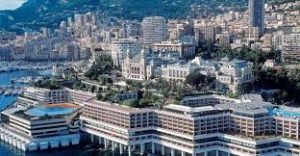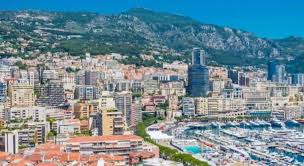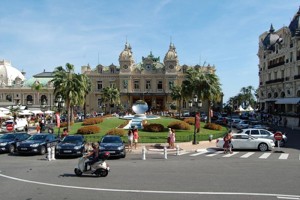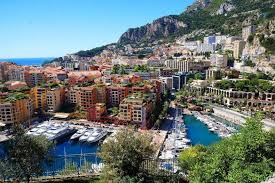Monaco. History and culture of Monaco
 The history of Monaco is largely the story of the Grimaldi family, which owns these lands. In 1918, an agreement was concluded between Monaco and France, according to which, after the complete disappearance of the Grimaldi dynasty, Monaco will become an autonomous region of France. The modern territory of Monaco was inhabited back in the Stone Age. According to legend, during the Roman era one young Corsican named Devot was executed, her body was placed in a boat and sent to Africa. The boat got off course and ran aground off the coast of Monaco, where the state was founded in honor of this girl. The first large-scale construction began here during the Genoese dynasty of the Gibellins, which ruled Monaco in the 13th century. But on January 8, 1297, the first representative of the Grimaldi clan crept into the Gibellin fortress, attacking them from the rear, and thereby ensured careless living for their descendants over the next 700 years. In 1489, the French king Charles VIII recognized the independence of Monaco. Despite some domination of Spain over Monaco from 1524 to 1641, France and Monaco were always good neighbors, although they existed separately from each other. Nevertheless, the possessive nature of France prevailed, and in 1793, during the new revolutionary regime, the lands of Monaco were annexed. Monaco’s independence was restored in 1861, and disputes in recent decades have been confined to taxation issues — Monaco refuses to tax French citizens and French companies located in its territory. The modern history of Monaco is inextricably linked with its real ruler. Born in 1923, Prince Rainier III ascended the throne in 1949. His fabulous marriage to movie star Kelly Grace in 1956 became “icing on a piece of cake”, which further strengthened the glamorous image of Monaco. When the royal family consists of long-legged models and stunningly beautiful screen stars, all issues of democracy seem a little boring. However, the prince has enormous executive power, which elevates him to a higher rank than just the nominal head of state. Since the residents of Monaco are exempt from income tax, the principality is a kind of “tax haven” for the private capital of the world’s elite. The anonymity of bank deposits is strictly protected. Famous people of sports and cinema, constantly visiting expensive shops and driving in luxury cars, know that in Monaco their money is safe. Moreover, since 1993, the Principality has been a full member of the UN. Tourism in all its manifestations, from day trips to visiting the country by various delegations, is the basis of the economy and, together with the banking sector, forms the basis of the country’s budget. Various measures are being taken to modernize Monaco, for example, in the middle of 2002, an impressive berth was built here, which allowed to double the port capacity. In the same year, laws were passed guaranteeing the Grimaldi family’s power in the country, even if Crown Prince Albert did not leave a successor. We can assume that the culture of Monaco is always a new beautiful clothes, martini and food without cutlery. However, there are many cultural institutions, most of which appeared in the 17th century under the auspices of Prince Honor III, including the Philharmonic of Monte Carlo, the Monet-Carlo Ballet, opera and several theaters. If you discard all the “perfect cosmetics” of Monaco, you can find the remains of a very religious and spiritual culture. The legend of Devot, the patron saint and founder of Monaco, is a treasured part of the country’s heritage. Every year on January 27, a service is held in the church of St. Devot in her honor. Monaco also reveres saints such as St. Roman (a Roman legionary who died a martyrdom) and St. John.
The history of Monaco is largely the story of the Grimaldi family, which owns these lands. In 1918, an agreement was concluded between Monaco and France, according to which, after the complete disappearance of the Grimaldi dynasty, Monaco will become an autonomous region of France. The modern territory of Monaco was inhabited back in the Stone Age. According to legend, during the Roman era one young Corsican named Devot was executed, her body was placed in a boat and sent to Africa. The boat got off course and ran aground off the coast of Monaco, where the state was founded in honor of this girl. The first large-scale construction began here during the Genoese dynasty of the Gibellins, which ruled Monaco in the 13th century. But on January 8, 1297, the first representative of the Grimaldi clan crept into the Gibellin fortress, attacking them from the rear, and thereby ensured careless living for their descendants over the next 700 years. In 1489, the French king Charles VIII recognized the independence of Monaco. Despite some domination of Spain over Monaco from 1524 to 1641, France and Monaco were always good neighbors, although they existed separately from each other. Nevertheless, the possessive nature of France prevailed, and in 1793, during the new revolutionary regime, the lands of Monaco were annexed. Monaco’s independence was restored in 1861, and disputes in recent decades have been confined to taxation issues — Monaco refuses to tax French citizens and French companies located in its territory. The modern history of Monaco is inextricably linked with its real ruler. Born in 1923, Prince Rainier III ascended the throne in 1949. His fabulous marriage to movie star Kelly Grace in 1956 became “icing on a piece of cake”, which further strengthened the glamorous image of Monaco. When the royal family consists of long-legged models and stunningly beautiful screen stars, all issues of democracy seem a little boring. However, the prince has enormous executive power, which elevates him to a higher rank than just the nominal head of state. Since the residents of Monaco are exempt from income tax, the principality is a kind of “tax haven” for the private capital of the world’s elite. The anonymity of bank deposits is strictly protected. Famous people of sports and cinema, constantly visiting expensive shops and driving in luxury cars, know that in Monaco their money is safe. Moreover, since 1993, the Principality has been a full member of the UN. Tourism in all its manifestations, from day trips to visiting the country by various delegations, is the basis of the economy and, together with the banking sector, forms the basis of the country’s budget. Various measures are being taken to modernize Monaco, for example, in the middle of 2002, an impressive berth was built here, which allowed to double the port capacity. In the same year, laws were passed guaranteeing the Grimaldi family’s power in the country, even if Crown Prince Albert did not leave a successor. We can assume that the culture of Monaco is always a new beautiful clothes, martini and food without cutlery. However, there are many cultural institutions, most of which appeared in the 17th century under the auspices of Prince Honor III, including the Philharmonic of Monte Carlo, the Monet-Carlo Ballet, opera and several theaters. If you discard all the “perfect cosmetics” of Monaco, you can find the remains of a very religious and spiritual culture. The legend of Devot, the patron saint and founder of Monaco, is a treasured part of the country’s heritage. Every year on January 27, a service is held in the church of St. Devot in her honor. Monaco also reveres saints such as St. Roman (a Roman legionary who died a martyrdom) and St. John.




